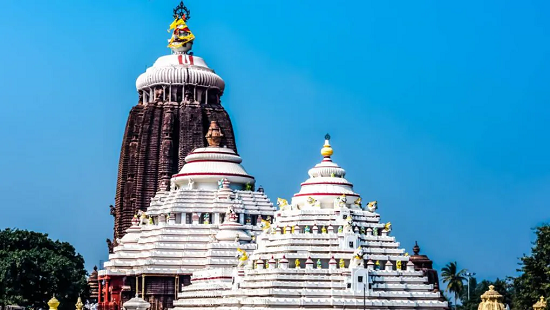
Terror Threat to Jagannath Temple in Puri Days Before Independence Day Raises Security Concerns
Puri: In a disturbing development just days before India’s Independence Day celebrations, the revered Jagannath Temple in Puri, Odisha, has received a terror threat. Authorities have moved swiftly after two pieces of graffiti, written in Odia and threatening to demolish the holy shrine, were discovered on the walls of a smaller temple nearby.
The messages were found on the Maa Budhi Thakurani temple located in Bali Sahi, a locality not far from the Srimandir complex. One of the graffiti chillingly read: “Terrorists will demolish the Srimandir. Call me, or else there will be destruction.”
Graffiti with Names and Numbers
What has raised further alarm among investigators is the inclusion of several phone numbers in the graffiti, alongside references to “PM Modi” and “Delhi.” These details have made the matter more complex, as they could either point toward a genuine threat or be an attempt at deliberate provocation.
A Puri resident who saw the graffiti told PTI that its location—on a place of worship near the Jagannath Temple—appeared designed to send a message of intimidation to both the devotees and the authorities.
Police Take Swift Action
Puri Superintendent of Police Pinak Mishra confirmed that the case is being treated with utmost seriousness. “We have taken cognisance of the matter and are taking it very seriously. We have got some information, and police teams are being formed to arrest those who are behind such a threat,” he said.
Police have begun combing through CCTV footage from the surrounding areas to identify those responsible. Given the temple’s high-profile status and its symbolic significance for millions of devotees, security measures are being reviewed and strengthened.
An Icon Under Watch
The Jagannath Temple is not just a religious landmark; it is an institution of immense cultural, historical, and spiritual importance for Odisha and India. Its annual Rath Yatra draws pilgrims from around the world, and its presence is deeply intertwined with the socio-religious fabric of the state.
Any perceived threat to the temple—whether credible or not—has the potential to stir widespread public concern. That is why incidents like this receive immediate attention from both law enforcement and intelligence agencies.
Independence Day Context
The timing of the graffiti discovery is particularly sensitive. Independence Day already prompts heightened security protocols across the country, with major religious sites, government buildings, and public spaces placed under surveillance to preempt any disruptive incidents.
In this climate, a threat—especially one invoking terrorism and destruction—inevitably prompts rapid escalation in both preventive measures and investigative urgency.
The Investigation’s Dual Challenge
While tracking down the culprits, investigators face two challenges:
Authenticity of the Threat: Determining whether the graffiti represents a genuine plan of action or is the work of pranksters seeking to cause fear.
Potential Misdirection: References to prominent political names and phone numbers may be red herrings, intended to divert attention or implicate unrelated individuals.
In either case, the response must balance thoroughness with restraint—ensuring public safety without creating unnecessary panic.
Citizens Urged to Stay Calm but Alert
Authorities have appealed to citizens to remain calm while staying alert to suspicious activities. This aligns with a broader philosophy of security management: public cooperation is often the first and most effective line of defence against threats.
The police have also urged residents not to circulate unverified information on social media, a habit that can amplify fear and complicate investigations.
Why This Matters Beyond the Headlines
In the analytical style of Manish Sabharwal, incidents like this remind us that security is both a hardware and a software challenge. The hardware is visible—CCTV cameras, barricades, patrols. The software is invisible—public trust, intelligence networks, and the capacity to decode intent from signals like graffiti.
Threats to icons like the Jagannath Temple are not just about physical safety; they test the resilience of communities, the professionalism of law enforcement, and the balance between vigilance and normalcy.
As Odisha’s police intensify their investigation, the larger message is clear: heritage sites must be guarded not only for their religious significance but for their role in the collective identity of a people. In the coming days, the focus will be on ensuring that the Srimandir continues to stand as it always has—untouched by fear, unshaken in faith.



